Is all the brood at the top to avoid the more humid lower chambers, or because the top is warmer?
- Formiculture.com
- Forums
- Gallery
- Members
- Member Map
- Chat

Is all the brood at the top to avoid the more humid lower chambers, or because the top is warmer?
"Always do right. This will gratify some people, and astound the rest." -- Samuel Clemens
They are avoiding the moisture near the bottom. I am finding that most of my colonies of all different species really do not like much moisture. I'm starting to understand why the Germans think we are weird with all our obsessive focus on hydration.
They are avoiding the moisture near the bottom. I am finding that most of my colonies of all different species really do not like much moisture. I'm starting to understand why the Germans think we are weird with all our obsessive focus on hydration.
What material do the Germans most commonly use in their formicaria?
Well all I can say is what we were told by our hand-full of German members here who visit from time to time. I think it was mostly Ytong. They said they don't even hydrate anything, and instead just provide water in liquid feeders. Now that might be fine for some species of ants, but I know some will die if they don't have enough humidity; I've had it happen when test tubes ran out of water without me knowing. Even though the colony had liquid to drink, they all dried up and died.
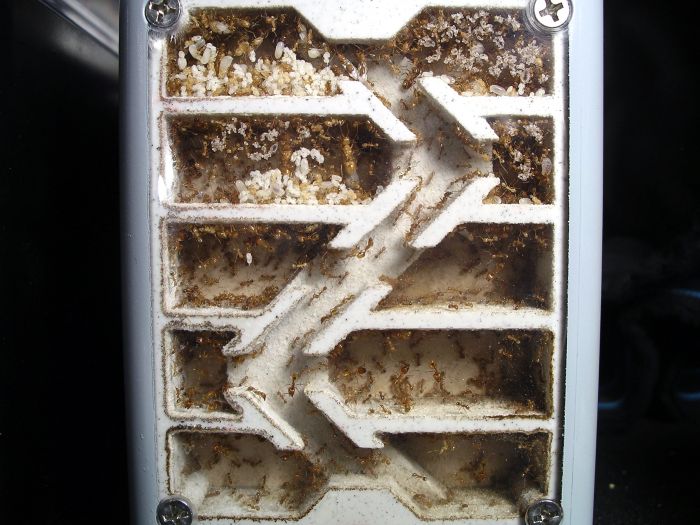
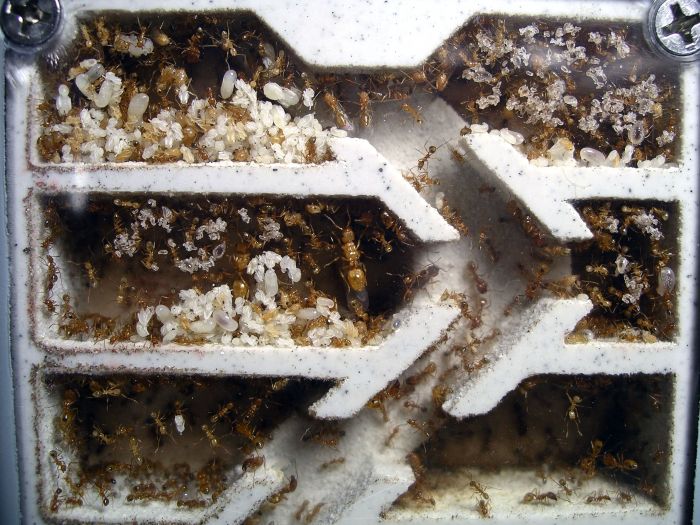
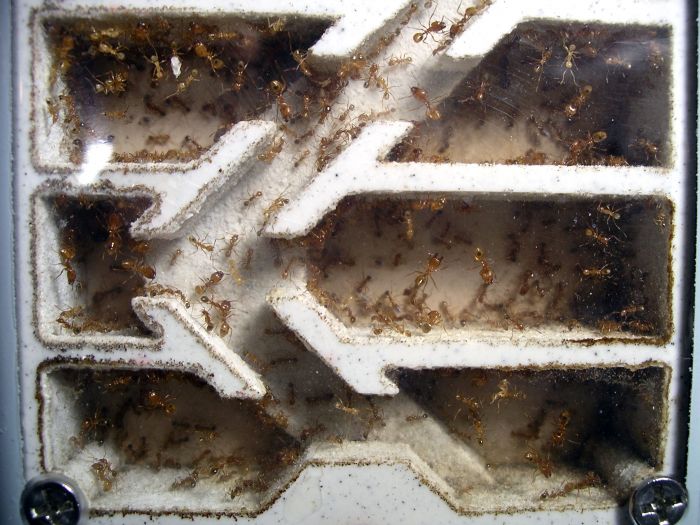
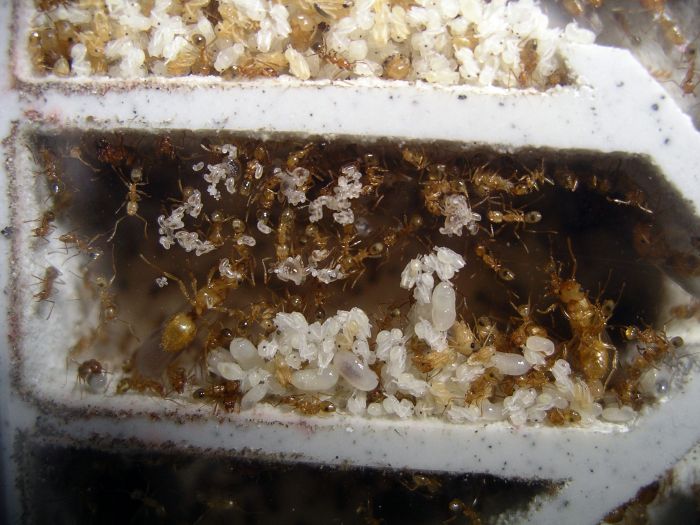
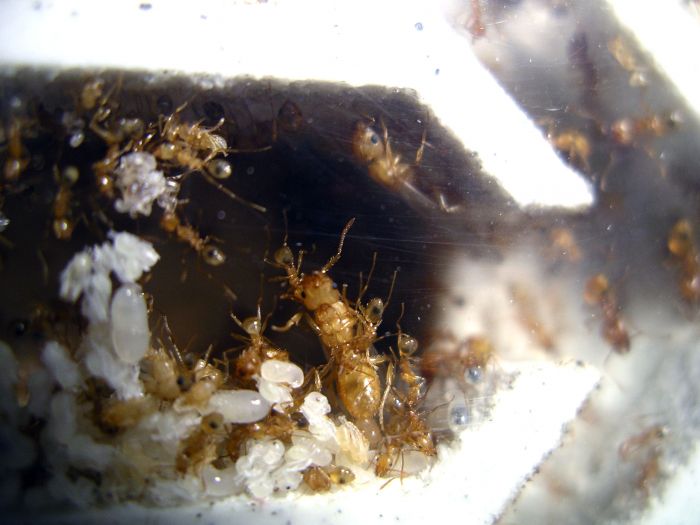
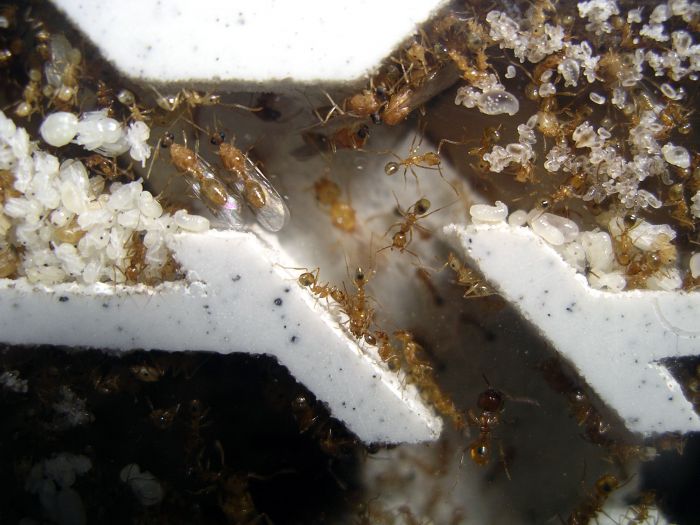
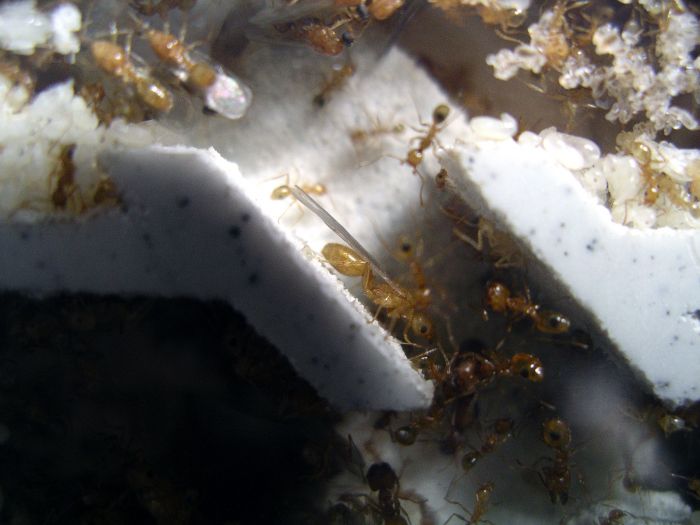
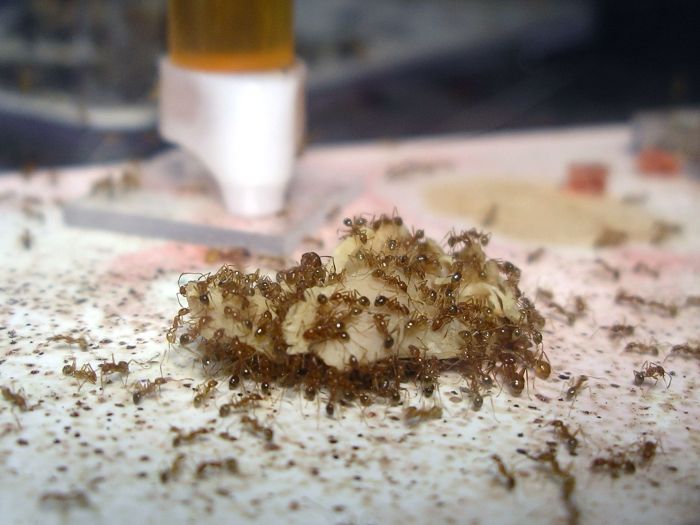
Update 6-16-2015
Yesterday when I got home from work around 4:00 PM, the colony was having a mating flight. Alates and workers were swarming all over the place in the out world, and there were males climbing up the liquid feeders and flying around.
Does that mean you now have a bunch of fertilized queens running around the nest?
Camponotus vicinus, Crematogaster 1, Crematogaster 2, Formica francoeuri, *, *, Myrmecocystus testaceus, Novomessor cockerelli, Pheidole hyatti, Pogonomyrmex californicus, Pogonomyrmex rugosus, Solenopsis invicta
Does that mean you now have a bunch of fertilized queens running around the nest?
Probably not. I never actually saw any mating.
Are those alates still alive?
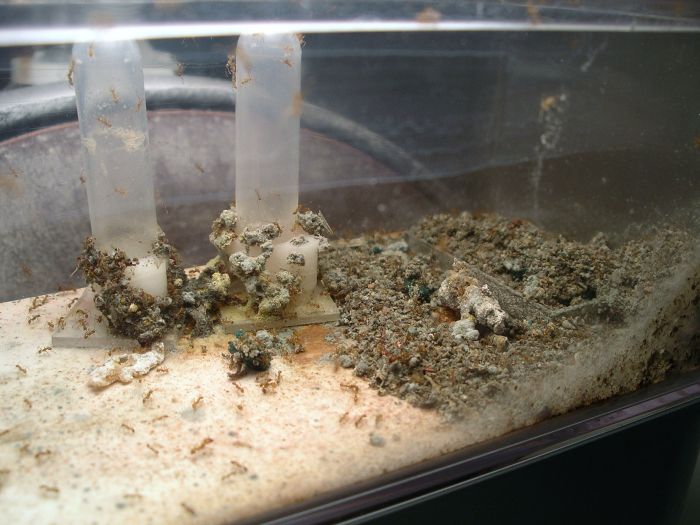
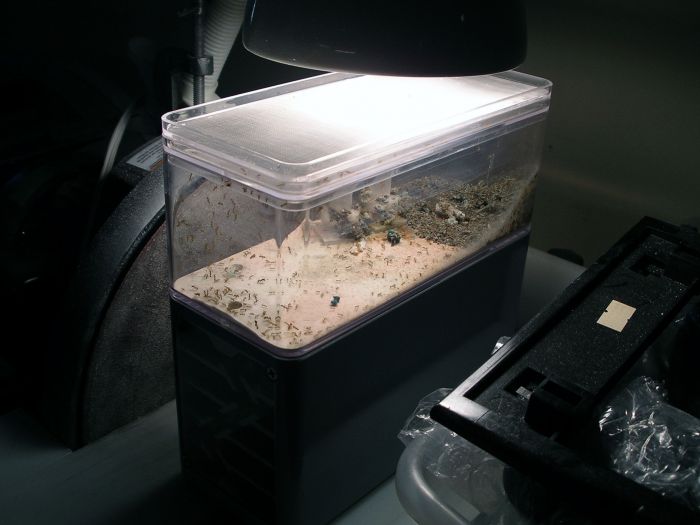
Why do they kill off the alates? Because they didn't fly?
Camponotus vicinus, Crematogaster 1, Crematogaster 2, Formica francoeuri, *, *, Myrmecocystus testaceus, Novomessor cockerelli, Pheidole hyatti, Pogonomyrmex californicus, Pogonomyrmex rugosus, Solenopsis invicta
As far as I know, they either do that or just evict them if they're left-overs.
If they don't fly they're just draining nest resources and are useless to the colony. Better to kill them than feed them and take care of them from the ant's perspective.
The entire purpose of ant colonies is to reproduce—a colony would not eliminate its reproductive potential—a great investment in energy and time—without good reason.
Many species overwinter alates. Since ants do not have an understanding of the world around them the same way we do, but rather operate on many simple if this, then that instructions, it is more likely that the reproductives were recycled or removed due to adverse environmental conditions or lack of food.
True that the colony should survive than the reproductives—but just understand that the decision making process was more rule-based and fixed, versus something premeditated and carefully thought out.
Not sure how you can say their decision making process is rule-based, but then also claim that they are actually aware of how much of an investment it was to create alates and thus make decisions based on that.
Update 8-13-2015
Well it looks like most of their alates are still there. They've been swarming in the evenings again right around the time I get home from work every day.
Here's some video I got of them this time.
You should release some outside to breed with the other alates, and then collect the spoils. You would have still mated captive queens.
Update 8-13-2015
Well it looks like most of their alates are still there. They've been swarming in the evenings again right around the time I get home from work every day.
Here's some video I got of them this time.
Species I keep:
1 Lasius cf. Neoniger 30 workers
1 Camponotus sp. 15 workers
20 Tetramorium SpE 30 workers
1 T. Sessile 200 workers
These don't live outside my house.
 |
Ant Keeping →
Ant Keeping Journals →
cooIboyJ's Nylanderia vividula journalStarted by cooIboyJ , Sep 6 2025 |
|

|
|
Ant Keeping →
Ant Keeping Journals →
Ants_Dakota's Camponotus sp. JournalStarted by Ants_Dakota , Jul 13 2025 |
|

|
||
Market Place →
General Market Place →
Looking to buy Pheidole hyatti or Pheidole desertorum - CaliforniaStarted by SoopySoop , Jun 22 2025 |
|

|
||
Ant Keeping →
Ant Keeping Journals →
Strickys Formica JournalStarted by stricky_ants , Jun 21 2025 |
|
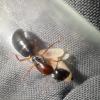
|
||
Ant Keeping →
Ant Keeping Journals →
AntTx's Camponotus sansabeanus JournalStarted by AntsTx , Jun 17 2025 |
|

|
0 members, 0 guests, 0 anonymous users